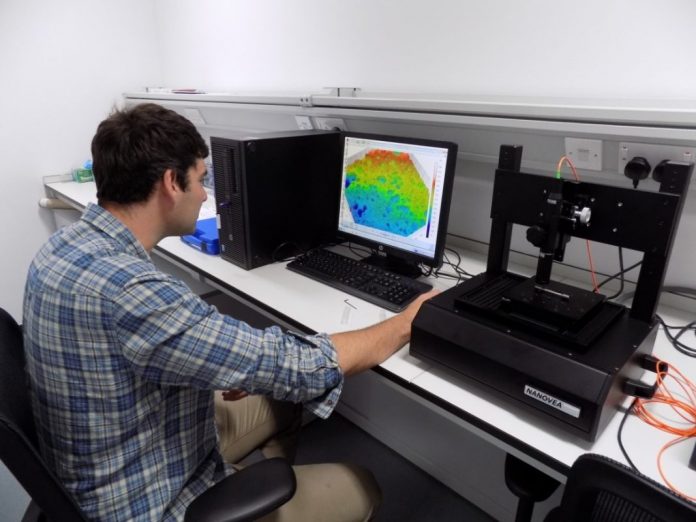Dr Helen M Davies, Senior Lecturer at the Institute of Structural Materials at Swansea University highlights microstructural characterisation…
Swansea University is well known for its longstanding expertise in the area of mechanical and microstructural characterisation of high performance materials. A succession of academics has promoted an intimate relationship with the power generation industry, in particular working on alloys aligned to gas turbine technologies. A world renowned research group has been developed over the years, focussing on high temperature creep, fatigue and associated modes of operation, supported by world class mechanical test facilities. This provenance has culminated in the Institute of Structural Materials (ISM), recently awarded Major Research Facility status by Swansea University and housed in a purpose designed, bespoke facility on the new Bay Campus to the east of the city.
Completed in 2014, the ISM Building houses a mix of academic and commercial activities. In 2009 the University incorporated a wholly owned “spin out” company – Swansea Materials Research & Testing Ltd (SMaRT) – an ISO 17025 accredited test facility sitting under the ISM umbrella, supplying design quality mechanical property data to the wider structural integrity sector.
The Rolls-Royce University Technology Centre in Materials, also based within the ISM, results from the links forged with this major multi-national enterprise since the early 1970s. The UTC activities currently support a team of six academics, fifteen research officers, eight support staff and thirty plus EngD/PhD students.
All mechanical testing undertaken by SMaRT can be supported by metallographic preparation facilities, a well-equipped microscopy suite and immediate academic understanding. Metallographic sections of novel and high specification alloys can be expertly prepared in-house for subsequent analyses.
The imaging suite hosts a range of characterisation equipment including: a high resolution Keyence VHX-700F optical microscope, an Hitachi SU3500 scanning electron microscope (SEM) with integrated electron backscatter diffraction (EBSD) and energy dispersive X-ray analyses equipment and a Nanovea PS50 surface profilometer, as shown in Figure 1. A titanium alloy prepared using our metallographic facilities and imaged using the Keyence VHF700F is shown in Figure 2.

As well as high resolution optical imaging, the Keyence VHX-700F, has a detachable camera, allowing inspections of larger scaled specimens, either as a post-test fracture surface or in situ on a mechanical rig during testing. In addition, a host of features such as a depth composition function and 3D imaging feature, allow easy observation and imaging of uneven surfaces.
Higher resolution imaging (up to x 800k screen display) and analyses can be conducted on the Hitachi SU3500 SEM, Figure 3 and Figure 4. The EDX system is used for elemental analysis or to perform chemical characterisation of samples, while EBSD analysis can deliver a wealth of information ranging from bulk texture information, grain boundary character distributions (GBCDs) to fracture surface feature orientation measurements (e.g. facet inclinations). Facet orientation determination via EBSD was first developed at Swansea almost twenty years ago. The ISM’s state of the art integrated SEM/EDX/EBSD facilities are being utilised to advance such research and gain a much deeper insight into how grain orientation/microstructure relationships affect fracture behaviour. Figure 5 shows a fatigue facet on the fracture surface of a titanium alloy along with an example of an indexed Kikuchi pattern.


The Hitachi SU3500 SEM also contains a novel SEMtester 1000EBSD system, a temperature controlled tensile testing chamber. This compact mechanical testing stage, capable of applying up to a 4500N tensile/compression load, allows in-situ tensile tests to be performed with real-time high magnification imaging and analyses of “real time” deformation and failure. The system is also equipped with a tilting sample heater for EBSD applications, designed to mount onto the EBSD tensile stages and heat to 1200˚C in high vacuum. These additional capabilities of the SEM system are being used to develop unique insights into fracture mechanisms on a micro-level.
Dr Helen M Davies
Senior Lecturer
Institute of Structural Materials
h.m.davies@swansea.ac.uk
http://www.swansea.ac.uk/engineering/bay-campus/engineering-quarter/institute-of-structural-materials/
Please note: this is a commercial profile











